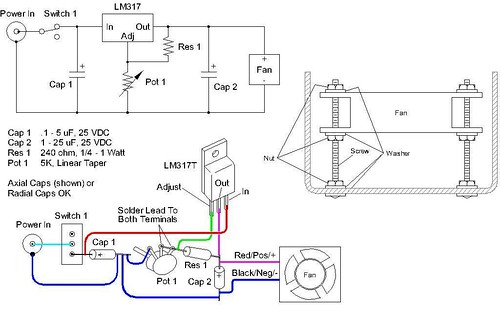So I've been reading for like 2 hours now and I can't find a solution to my problem. I used the schematic below.
Voltage regulator - LM317T
Resistor - 330 ohm
Pot - 5K-Ohm 0.5W linear-Taper from Radio Shack
Capacitor's - 0.1uF 50WVDC Ceramic Disk (both)
Fan rating - 12V 200mA
Power supply output - 12.5V 0.64A
When I plug the fan in it starts up and my pot doesn't change the speed in the least bit. What am I missing?

Voltage regulator - LM317T
Resistor - 330 ohm
Pot - 5K-Ohm 0.5W linear-Taper from Radio Shack
Capacitor's - 0.1uF 50WVDC Ceramic Disk (both)
Fan rating - 12V 200mA
Power supply output - 12.5V 0.64A
When I plug the fan in it starts up and my pot doesn't change the speed in the least bit. What am I missing?



